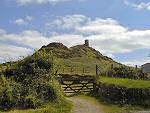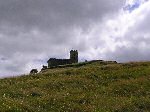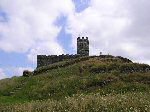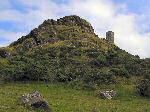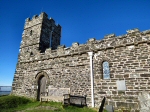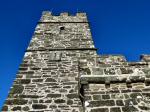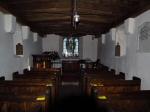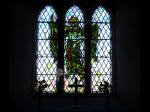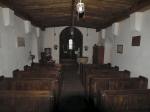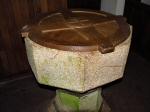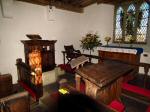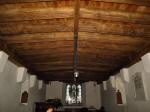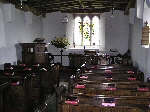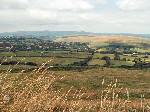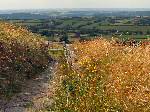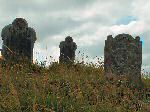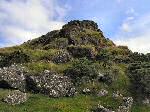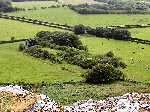The name Brentor may be derived from the Anglo-Saxon
‘brene’ meaning to burn (perhaps relating to beacons being lit on its
summit) or the Celtic ‘bryn’, meaning hill or mount.
The church of St. Michael de Rupe (of the rock) on the summit is the
most obvious sign of human building. However long before that, human
hands had used Brentor's prominent position as a defensive site with
an Iron Age earthwork being built here in approximately 500BC. The remains
of which can be seen around the eastern side of the tor with its numerous
grass-covered lumps and bumps, an earthen bank (once a massive defensive
rampart) and the remains of a strong entrance. To the south-west of
the tor there are the remains of a 19th century maganese mine which
operated from 1815 to 1856.
St. Michael de Rupe was built around 1130 by Robert Giffard, the lord
of the manor of Lamerton and Whitchurch. The church was re-built at
the end of the 13th century and the tower added in the 1400s. It is
the fourth smallest complete parish church in England measuring 37ft
long and 14ft 6in wide. Although the church of St. Michael is the parish
church of Brentor there is, in the nearby village of Northern Brentor,
the church of Christ Church. This is what is known as a chapel of ease
for St. Michael as its position on Brentor does cause problems of access
for services especially when the weather is poor or for burials, as
the soil on Brentor is thin. The church underwent a major restoration
in 1890, with even the roof being replaced. The font is the only furnishing
of the church that dates from before the restoration of 1890. There
is a stone sundial on the south side of the tower; the name Walter Batten
is at the foot of the dial, which is dated 1694. |

